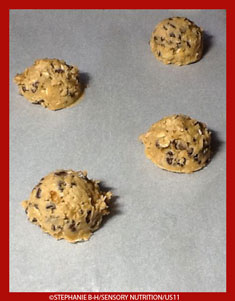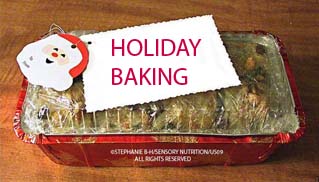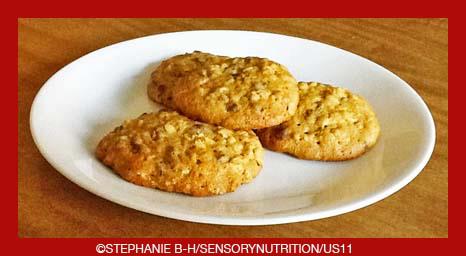 If you are making any type of drop sugar cookie recipes up this holiday season, here are some easy to remember tips to keep in mind…
If you are making any type of drop sugar cookie recipes up this holiday season, here are some easy to remember tips to keep in mind…
• Please remember to follow any recipe directions. Different methods will yield very different results so following the method given is important for cookie success.
• Honey or maple syrup or other sugar syrups (such as corn syrup) will improve browning in baked goods, including if some is included for part of the “sugar” ratio in specific cookie recipes. A little bit of syrup can go a long way. Such syrups are hygroscopic and adding some of them in a recipe to replace some of the “sugar” in the recipe means that the cookies will stay softer longer after baking off (both syrups and honey act as humectants in baked goods).
• Sugar cookies that are the drop style do best when you refrigerate the dough at least 24 hours and preferably 36 hours before baking them off. Not only will the flavor better develop in them, but the fat will be well chilled and there will be less cookie spread that way.
• Definitely keep the cookie dough refrigerated between baking them off on cookie sheets or pans in the oven–that is very critical as the dough needs to stay truly refrigerator cold before it hits that hot oven air.
• Don’t crowd cookies on your silicone-coated baking parchment lining your cookie sheets or pans. Space cookies out based on their size and anticipated cookie spread as they bake off in the oven.
Note in the picture that the cookies are “offset” from one another.
When the next group of cookies are baked, they will be in the “empty” spaces now showing on the baking parchment and any crumbs that might be on the parchment from the previous batch of cookies will be previously scraped off with an offset spatula that is used to remove the baked cookies before new scoops of cookie dough go down on the baking parchment paper.
By using double-sided silicone-coated baking parchment paper, the paper can be “flipped over” to the other side and it will be fresh for use for the next two sheets of cookies going into the oven.
• Never bake off drop sugar cookies for as long as you think they need to bake while still in the oven.
The cookies will continue to bake even AFTER you remove the cookie sheet or cookie pan from the oven as that sheet or pan is still very hot.
As the cookies hit the room air temperature, they will start to firm up–give them those extra seconds to do so. If the drop sugar cookies have been properly baked, you don’t have to “rush” to get them off the silicone coated baking parchment paper. Let them set up a minute or two.
• It is key is to NEVER over bake them while they are still in the oven.
• No one wants the cookies to overcook, so once the cookies start to set up after coming out of the oven, then promptly remove them from the baking sheet to a proper wire cookie cooling rack. Many folks like cookies still warm from the oven, but before storing, be sure the cookies are COMPLETELY cooled off.
• Allow the cookie sheets to cool COMPLETELY between batches! NEVER put cold cookie dough on a silicone coated parchment paper lined cookie sheet if the cookie sheet is still hot as that leads to excessive cookie spread.
• Cookie size, distance between cookies, number of cookie sheets in the oven at once, types of cookie sheets, and actual oven temperature will ALL affect how long it takes to bake the cookies off. If you rotate the pans half way through baking, that will increase the time it takes for the cookies to finish baking off as well.
• How you store a cookie will affect how much moisture it absorbs from its “environment” and you can indeed make choices that will influence that environment.
Metal tins are most often used to store say butter cookies. Bar cookies do best when stored in plastic wrap lined tins, including the reusable type decorative aluminum foil ones, or in plastic air-tight sealed containers.
 Dry air with low humidity dries cookies out (winter time air is often heated in say the Northeast where I live, so it will dry things out; while in a humid location the opposite might be true if say one has tropical air with high temperature but also super high humidity).
Dry air with low humidity dries cookies out (winter time air is often heated in say the Northeast where I live, so it will dry things out; while in a humid location the opposite might be true if say one has tropical air with high temperature but also super high humidity).
Pick your storage option wisely based on the type of cookie and the environment you want it in to maintain its best quality.



